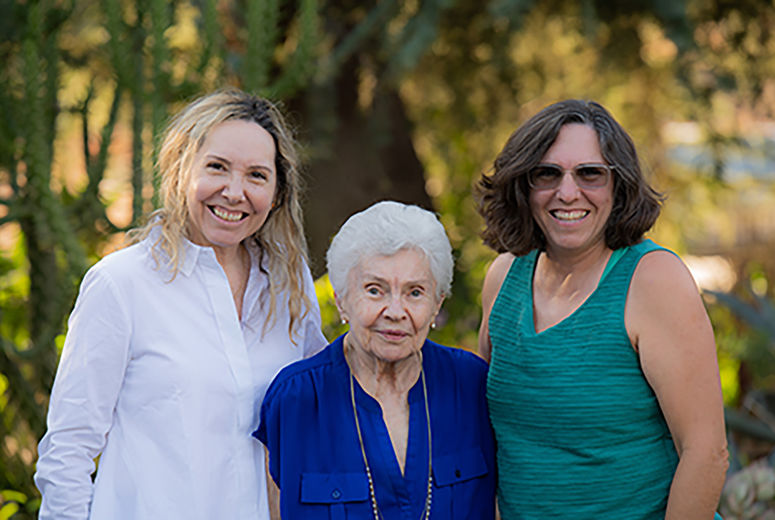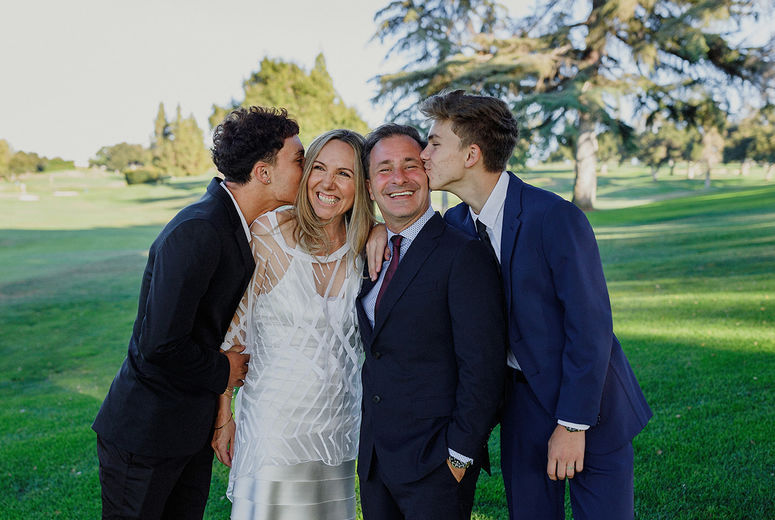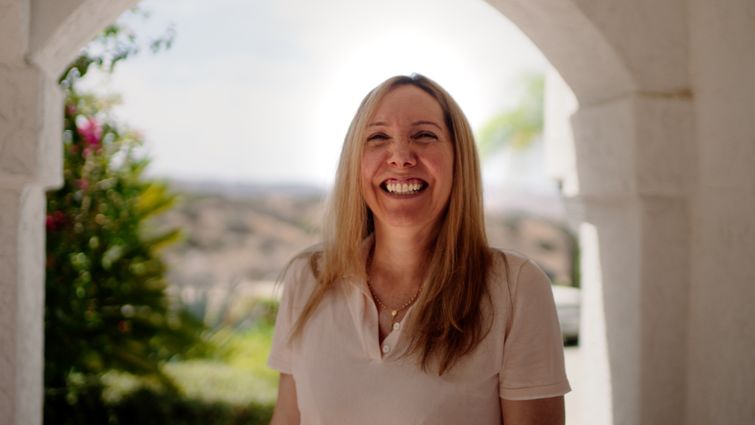
When Patricia Bianchi received a diagnosis for early stage breast cancer, she partnered with care teams at Loma Linda University Cancer Center to determine a treatment plan best suited to her needs and preferences.
It was just another annual Well-Woman Exam for 53-year-old Patricia Bianchi — until her gynecologist felt two lumps in her left breast. Bianchi’s mother is a two-time breast cancer survivor, so Bianchi had been receiving screenings for breast cancer since age 30. Previous lumps she’d discovered had proven non-cancerous, so Bianchi says she tried to stay positive.
But further testing confirmed that Bianchi tested positive for breast cancer in April this year. After that, Bianchi — wife, sister, daughter, and mother of two — would concentrate on building strong relations with her care team at Loma Linda University Cancer Center, considering her treatment options, and selecting the best path forward based on her preferences.
"When you go through something like this for the first time, you appreciate it when people are not only professional, but nice and compassionate,” Bianchi says of her interactions with the Cancer Center’s care teams. “Everyone who I interacted with made me feel very comfortable. To me, that quality is as important as knowledge and professionalism.”
Care teams utilized advanced imaging and minimally invasive technologies to diagnose and stage Bianchi’s cancer. First, 3-dimensional mammography, also called tomosynthesis, allowed experts to evaluate Bianchi's breast tissue more precisely and clearly than 2-dimensional mammography. Next, dedicated breast radiologists performed a radiology-guided imaging biopsy — a minimally invasive way to sample breast tissue using a needle and ultrasound — to determine whether the lumps were cancerous.
One of the highlights of Bianchi’s case was that she caught the cancer at an early stage, thanks to her vigilance about attending routine health appointments, says Halley Vora, MD, medical director of the Breast Health Center and breast surgical oncologist at LLU Cancer Center. The earlier breast cancer is detected, the easier it is to treat.
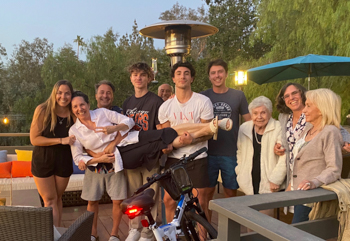
Upon receiving her diagnosis, Bianchi says she was grateful for the love and support of her family members — including her survivor mother and siblings who’d immigrated from Argentina. Though Bianchi says she mainly stayed at home this year to safeguard her health while receiving cancer treatment during a pandemic, she has been able to continue working remotely at her “dream job” as a Spanish–English court interpreter between appointments.
Soon after her cancer diagnosis, Bianchi underwent genetic testing because of her family history and discovered that she did not carry a gene that heightens the risk of breast cancer. After speaking with Vora about the results and considering her options and preferences, Bianchi decided to opt for a lumpectomy — targeted removal of the tumor with some surrounding normal tissue and a sentinel lymph node biopsy. Bianchi says she underwent surgery with a positive attitude and trust in her surgeon and care team, confident that she was in skilled hands. When she awoke, her care team, husband, and two sons greeted her at the bedside.
As Bianchi's surgeon, Vora says pathology reports confirmed complete removal of the cancer in the targeted area and no trace of cancer in Bianchi’s lymph nodes.
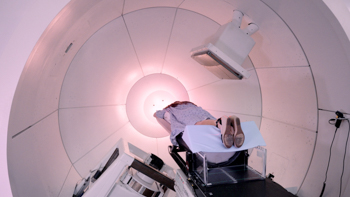
Because of the successful lumpectomy and her early-stage breast cancer, Bianchi was a candidate for benefitting from proton therapy: a targeted way of delivering radiation directly to an area affected by the tumor. The proton therapy lowers the risk of breast cancer recurring in the same area as before. Bianchi says she worked with radiation oncologist Jessica Jutzy, MD, PhD, who guided her with care and compassion each step of the way.
“I was glad Ms. Bianchi was able to benefit from the proton therapy that our Cancer Center offers, one of the few centers to do so in the country,” Vora says.
Exactly two months ago, Bianchi completed her last proton treatment. “I feel blessed and thankful for the support of my family and the care I received at the Cancer Center,” she says. “I don’t know what the future will hold, but it's been a good ride so far.”

She recently returned from a trip to Italy with her husband of 28 years and says she looks forward to continuing her dream job, spending time with family, and staying active through activities like biking and tennis. At the same time, Bianchi says she will continue to follow up with her care team at the Cancer Center, including medical oncologist Gayathri Nagaraj, MD.
Throughout the emotional and physical process of battling breast cancer, Vora notes a good patient-provider relationship involving mutual trust and appreciation is one of the most critical aspects of patient care.
“At LLU Cancer Center, we recognize that no two patients are alike and no two cancers are alike, so our care teams hold dear this mission to deliver whole person, individualized care for each patient.”
Get our newsletter for cancer-fighting tips, activities and recipes. Subscribe
Care teams at Loma Linda University Cancer Center are committed to providing patients with compassionate, comprehensive, and personalized care that gives them the best opportunity to face and overcome breast cancer. To learn more about breast cancer care at the Cancer Center, please visit lluh.org/cancer-center/cancer-programs/breast-cancer-care or call (800) 782-2623.

